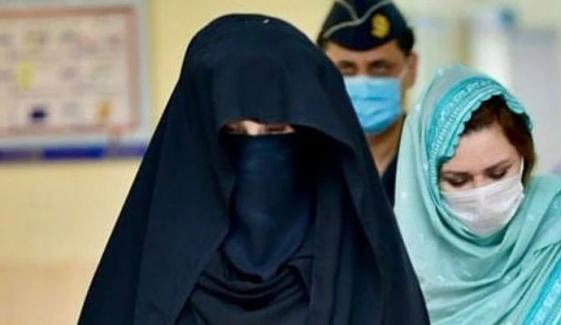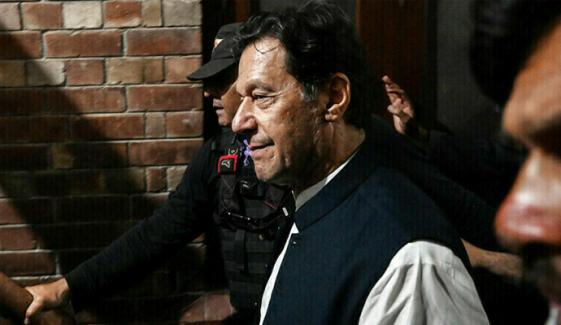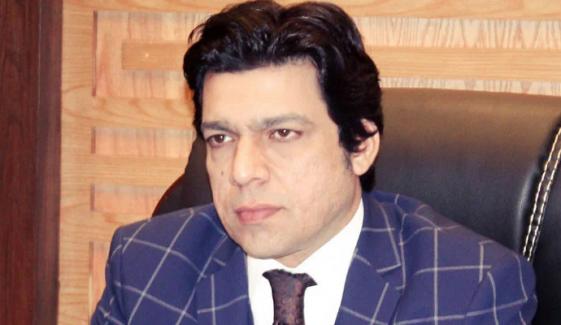Before Trump’s purge at DHS, top officials challenged plan for mass family arrests
Posted By: Abid on 13-05-2019 | 19:49:11Category: Political Videos, NewsIn the weeks before they were ousted last month, Homeland Security Secretary Kirstjen Nielsen and top immigration enforcement official Ronald Vitiello challenged a secret White House plan to arrest thousands of parents and children in a blitz operation against migrants in 10 major U.S. cities.
According to seven current and former Department of Homeland Security officials, the administration wanted to target the crush of families that had crossed the U.S.-Mexico border after the president’s failed “zero tolerance” prosecution push in early 2018. The ultimate purpose, the officials said, was a show of force to send the message that the United States was going to get tough by swiftly moving to detain and deport recent immigrants — including families with children.
The sprawling operation included an effort to fast-track immigration court cases, allowing the government to obtain deportation orders against those who did not show for their hearings — officials said 90 percent of those targeted were found deportable in their absence. The subsequent arrests would have required coordinated raids against parents with children in their homes and neighborhoods.
[From the border, more frustrating immigration numbers for Trump]
But Vitiello and Nielsen halted it, concerned about a lack of preparation by U.S. Immigration and Customs Enforcement agents, the risk of public outrage and worries that it would divert resources from the border.
Senior Trump adviser Stephen Miller and ICE Deputy Director Matthew Albence were especially supportive of the plan, officials said, eager to execute dramatic, highly visible mass arrests that they argued would help deter the soaring influx of families.
The arrests were planned for New York, Chicago, Los Angeles and the other largest U.S. destinations for Central American migrants. Though some of the cities are considered “sanctuary” jurisdictions with police departments that do not cooperate with ICE, the plan did not single out those locations, officials said.
ICE’s Enforcement and Removal Operations branch had an initial target list of 2,500 adults and children, but the plan, which remains under consideration, was viewed as a first step toward arresting as many as 10,000 migrants. The vast majority of families who have crossed the border in the past 18 months seeking asylum remain in the country, awaiting a court date or in defiance of deportation orders.
[U.S. asylum screeners to take more confrontational approach as Trump aims to turn more migrants away at border]
DHS officials said the objections Vitiello and Nielsen raised regarding the targeted “at large” arrests were mostly operational and logistical and not as a result of ethical concerns about arresting families an immigration judge had ordered to be deported.
“There was concern that it was being hastily put together, would be ineffective and might actually backfire by misdirecting resources away from critical border emergency response operations,” said one DHS official, who, like others, described the plan on the condition of anonymity.
Nielsen and others also worried that a massive effort to deport parents and children would detract from the Trump administration’s stated goal of going after “criminal aliens.”
“The proposal was nowhere near ready for prime time,” the official said, which is why DHS senior leaders blocked the White House. “They wanted 10 cities, thousands of targets.”
Officials at ICE and DHS declined to comment, and Vitiello and Nielsen did not respond to requests for comment. Miller declined to comment through a White House spokesman.
But administration officials who described the plan said Vitiello and Nielsen’s pushback was a factor in President Trump’s decision to oust both officials — particularly Vitiello.
About 500 Central American migrants tried to cross the border at the Rio Bravo in Ciudad Juarez, Mexico, on Thursday and turn themselves in to U.S. authorities. (David Peinado/EPA-EFE/Shutterstock)
The president has been livid about the number of unauthorized border-crossers being released into the U.S. interior, and he has repeatedly urged his aides to take the “toughest” approach possible.
Melissa Mark-Viverito, president of the Latino Victory Project and a former New York City Council speaker, said the goal of the policies appears to be to change migrant behavior, but she noted that it is not working.
“The level of depravity in terms of this administration has no bounds. It’s just insane,” Mark-Viverito said. “It’s inhumane. There is no sense of the understanding what the implications are for the greater society. There is no consideration that these families are making positive economic contributions to these cities. It is about fearmongering to the nth degree.”
Vitiello, a 30-year veteran of the Border Patrol, had been on track to be the Trump administration’s first confirmed ICE director when his nomination was abruptly rescinded on April 5 without explanation. Trump told reporters the next morning that he had opted to go in a “tougher direction,” without elaborating.
Nielsen was forced out two days later, faulted by the president for the unchecked rise in border crossings.
[Border Patrol stations in South Texas are so overcrowded that U.S. is using aircraft to relocate migrants for processing]
Miller has told the president that some members of his administration don’t have his best interests at heart, and that they are too worried about their own reputations to carry out his agenda effectively, according to current and former administration officials.
The president’s supporters also have been urging him to wield a firm hand.
Speaking on “Fox and Friends” on Thursday, Vitiello’s predecessor at ICE, Tom Homan, said the agency should “do operationally what Congress has failed to do legislatively.”
“ICE needs to do a nationwide operation,” Homan said. “Look for family units and single adults who had their day in court or didn’t show up in court and [were] ordered removed by a federal judge,” he said. “If those orders don’t mean anything, if those orders aren’t executed, there is no integrity to our system.”
Vitiello had narrowly survived a confirmation vote to advance his nomination earlier this year, and some at ICE warned that a controversial raid rounding up children would probably sink his candidacy. They wanted to wait until his confirmation before executing the plan, arguing that it was more important for the agency to have a Senate-confirmed leader.
But the idea for the plan was conceived in September, current and formal officials said, and the pressure to carry it out continued to build as the president’s anger grew.
The Department of Justice had developed a “rocket docket” that prioritized the immigration cases of newly arrived families, allowing the government to secure deportation orders as soon as possible — jumping over an immigration court backlog that is nearing 900,000 cases.
DHS and White House aides had several high-level meetings about the proposal, officials said.
By January, Justice officials had obtained deportation rulings for 2,500 parents and children in 10 locations whose names were added to a target list for ICE.
Though Albence, a Miller ally who replaced Vitiello as acting director at ICE, was eager to execute the plan, current and former officials said, Vitiello urged caution and insisted that Nielsen should be consulted first. Her staff had concerns about how agents would handle families with children who are U.S. citizens and a lack of bed space to keep the families in detention, among other things.
Vitiello urged ICE agents to conduct more surveillance work, in particular to ensure that children would not be separated from their families in the blitz — such as in instances when a child might be at school or at a friend’s house when their parents were taken away.
Their objections reflected a deeper concern that the White House was pushing a shock-and-awe operation designed for show, but lacking in deliberative planning and research.
Vitiello“didn’t think it was a good idea,” said one DHS official with knowledge of the discussions.
“Both he and Nielsen instinctively thought it was bad policy and that the proposal was less than half-baked,” the official said.
Another DHS official who supported the plan rejected claims that it wasn’t fully developed, describing it as the product of nearly a year of planning. The government tried to contact the families for deportation hearings via certified mail, but most did not show up, officials said.
U.S. authorities detained more than 109,000 migrants in April, and families and children accounted for nearly 60 percent, the highest share ever.
The number of Central Americans coming across the Rio Grande jumped again during the past week, with Border Patrol agents taking more than 5,000 into custody on several days, leaving holding cells and overflow tent sites dangerously cramped, according to DHS officials.

 Conficts in PTI Leadership - PTI Islamabad Protest Update
Conficts in PTI Leadership - PTI Islamabad Protest Update
 PTI Protest In Islamabad - breaking news
PTI Protest In Islamabad - breaking news
 The new revolutionary Baji has not woken up yet, Uzma Bukhari
The new revolutionary Baji has not woken up yet, Uzma Bukhari
 Bushra Bibi is part of PTI convoy leaving Peshawar - Sheikh Waqas Akram
Bushra Bibi is part of PTI convoy leaving Peshawar - Sheikh Waqas Akram
 Constitutional Benches Established in Sindh High Court
Constitutional Benches Established in Sindh High Court
 Nusrat Fateh Ali Khan Defeated - Chahat Fateh Ali Khan's Big Claim
Nusrat Fateh Ali Khan Defeated - Chahat Fateh Ali Khan's Big Claim










